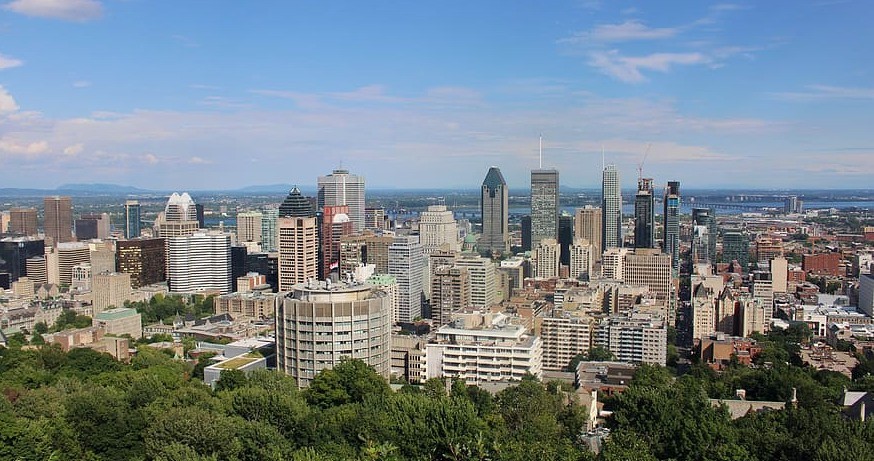POPULATION
1.780.000
CURRENCY
CANADIAN DOLLARS
(CA$)
TIMEZONE
GMT -4:00
LANGUAGE
FRENCH
WEATHER
JULY 21ºC /
JANUARY -9ºC
AIRPORTS
Montréal–Pierre Elliott Trudeau International Airport
HISTORICAL IMPORTANCE OF MONTREAL
Montreal holds deep historical significance as one of Canada's oldest cities, founded in 1642 by French settlers. Its strategic location on the St. Lawrence River made it a crucial hub for fur trade and exploration during the colonial era, shaping its early development. Over centuries, Montreal evolved into a vibrant cultural crossroads, blending Indigenous, French, and British influences, later enriched by waves of immigrants from around the world. It played a pivotal role in Canada's industrialization, becoming a center for manufacturing, trade, and transportation with landmarks like the Lachine Canal. Montreal's history is also marked by significant political and social movements, including the Quiet Revolution in the 1960s, which transformed Quebec society. Today, Montreal stands as a dynamic metropolis, celebrated for its cultural diversity, innovation, and contributions to Canada's social, economic, and cultural landscape.

NORTH AMERICA'S HOME OF EVENTS
Montreal is renowned for hosting some of North America's largest and most prestigious events, making it a vibrant and dynamic destination year-round. The city is home to the Montreal International Jazz Festival, the largest jazz festival in the world, attracting hundreds of thousands of music lovers and renowned artists from across the globe. It also hosts the Just for Laughs Festival, the largest international comedy festival, which brings together top comedians for performances, street shows, and gala events. The Montreal Grand Prix, part of the Formula 1 circuit, is one of the biggest motorsport events in North America, drawing fans and celebrities alike. Additionally, the city's winter is illuminated by the Montréal en Lumière festival and the electrifying Igloofest, making Montreal a premier destination for major cultural, music, and sporting events.
THE BEST TIME TO VISIT MONTREAL
The best time to visit Montreal is generally in late spring (May) or early fall (September to October). During these months, the weather is mild and pleasant, making it ideal for exploring the city's charming neighborhoods, outdoor markets, and cultural attractions without the peak summer crowds. Spring offers blooming flowers and rejuvenated parks, while fall showcases stunning foliage in parks like Mount Royal. These seasons also coincide with various festivals and events, such as the Montreal International Jazz Festival and the Gardens of Light at the Botanical Garden. Whether you're interested in cultural experiences, outdoor activities, or simply enjoying Montreal's vibrant atmosphere, late spring and early fall provide an optimal balance of favorable weather and exciting happenings.
TRANSPORTATION TO MONTREAL
Montreal is easily accessible via a range of transportation options. Montreal-Pierre Elliott Trudeau International Airport serves as a major gateway for domestic and international flights, located just a short distance from downtown. VIA Rail operates efficient train services connecting Montreal with Toronto, Ottawa, and Quebec City, among other destinations, from Central Station. Intercity buses provided by companies like Greyhound and Megabus offer affordable travel options, with the Montreal Coach Terminal serving as a central hub. The city's extensive public transit network, managed by the Société de transport de Montréal (STM), includes a metro system and bus routes that provide convenient access to neighborhoods and attractions throughout Montreal. Whether arriving by air, rail, bus, or car, Montreal offers comprehensive transportation infrastructure to accommodate travelers from near and far.
MOUNT ROYAL
Montreal's name is derived from "Mount Royal" (or "Mont Royal" in French), the prominent triple-peaked hill in the city's center. French explorer Jacques Cartier named the hill "Mont Réal" when he climbed it in 1535, and over time, this name evolved into "Montréal" as the city grew. The name symbolizes the city's topographical feature and reflects its French heritage, which continues to influence its cultural and historical identity. Mount Royal remains a central and iconic landmark, representing the origins and significance of the city's name.
THINGS TO DO AND PLACES TO VISIT

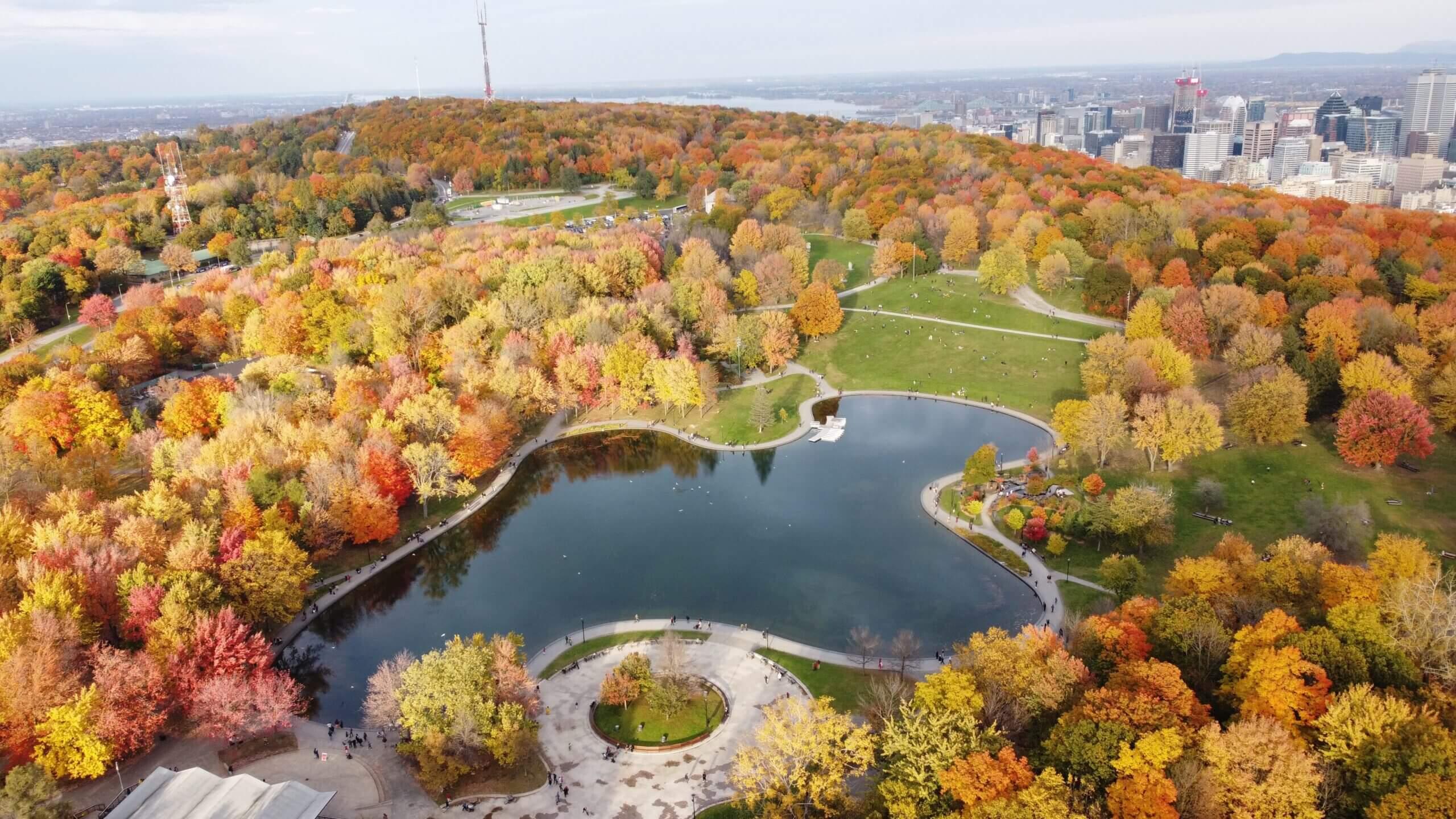
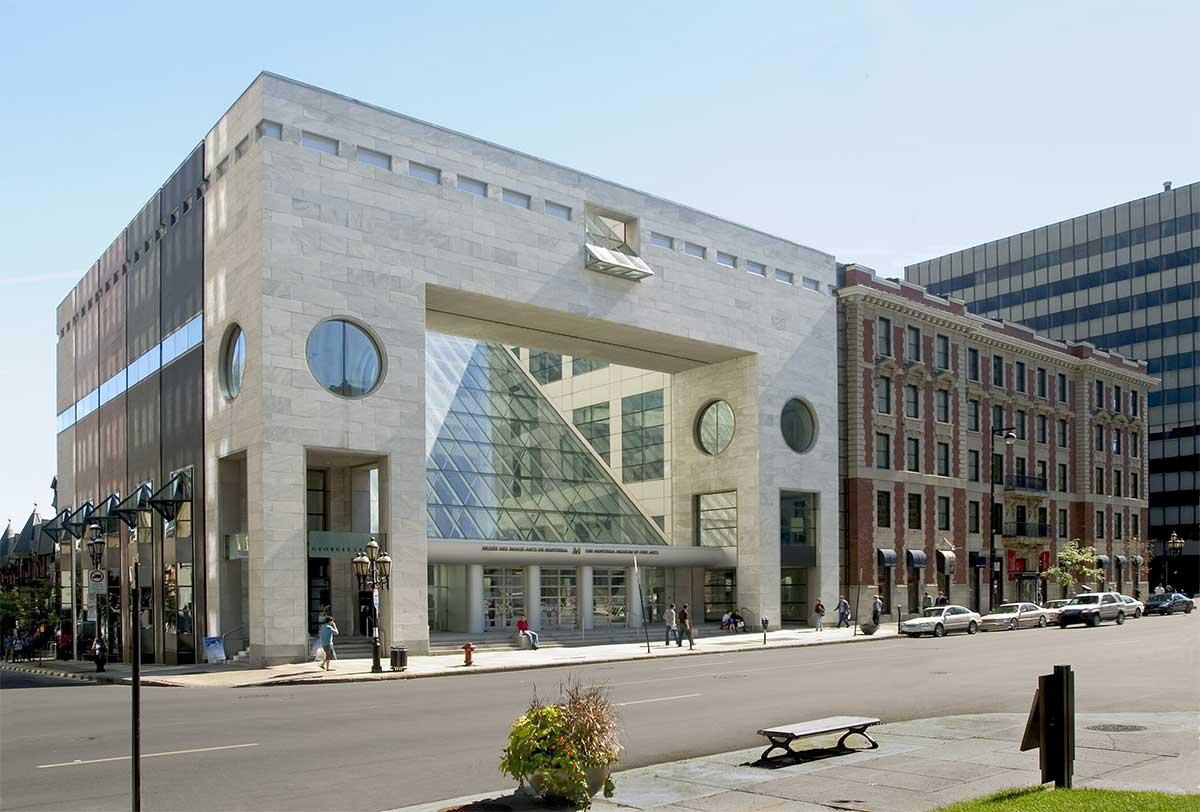
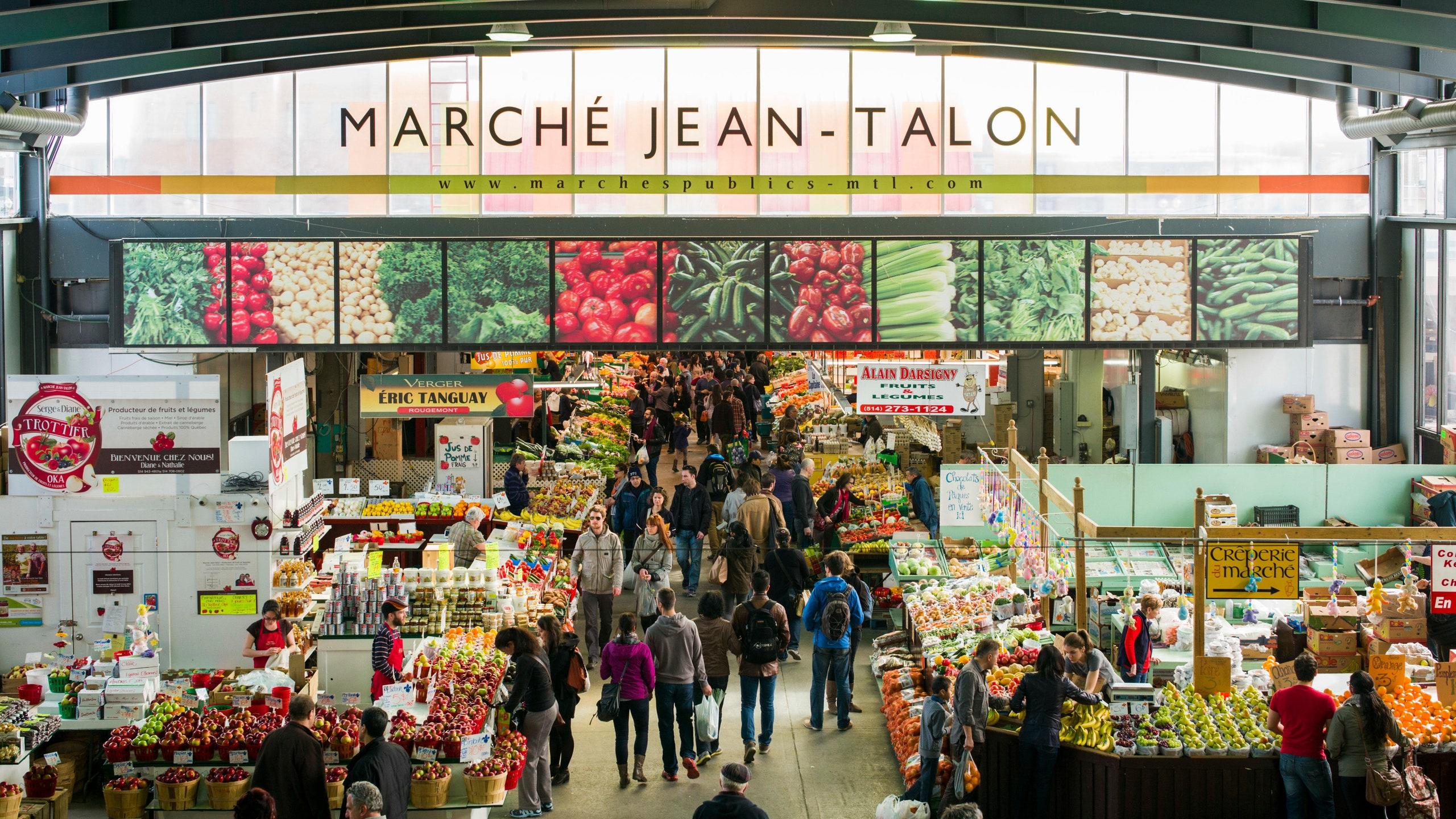
WHAT TO EAT IN MONTREAL
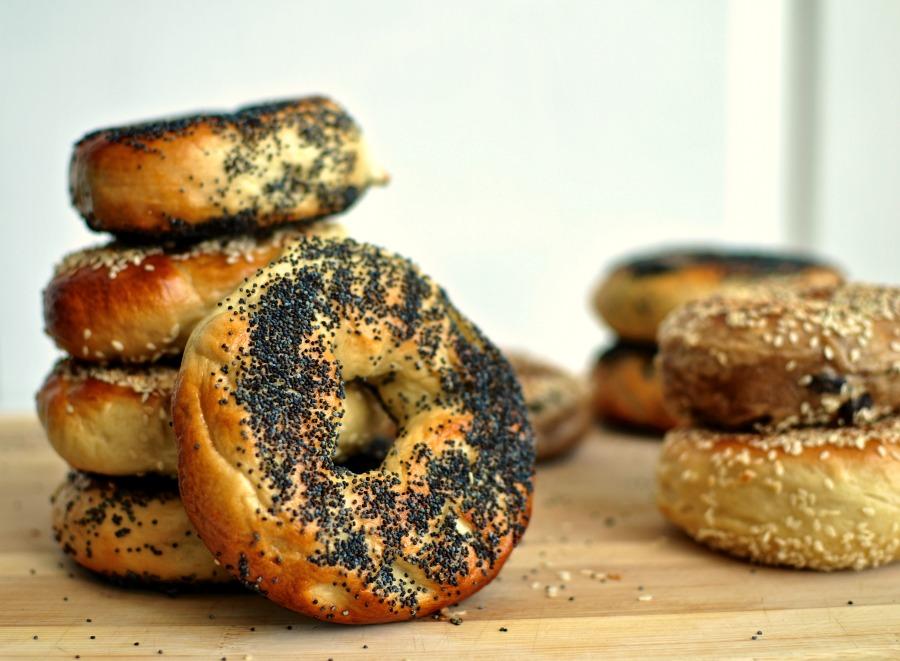
MONTREAL STYLE BAGELS
Montreal-style bagels are a local culinary specialty known for their smaller size, denser texture, and slightly sweet flavor compared to their New York counterparts. Made with egg and honey, the dough is boiled in honey-sweetened water before being baked in wood-fired ovens, resulting in a chewy interior and a crisp, slightly charred exterior. Typically topped with sesame or poppy seeds, these bagels are often enjoyed plain, with cream cheese, or as part of a sandwich. St-Viateur Bagel and Fairmount Bagel are two iconic bakeries that have been serving these beloved treats for decades, making them a must-visit for anyone in Montreal.
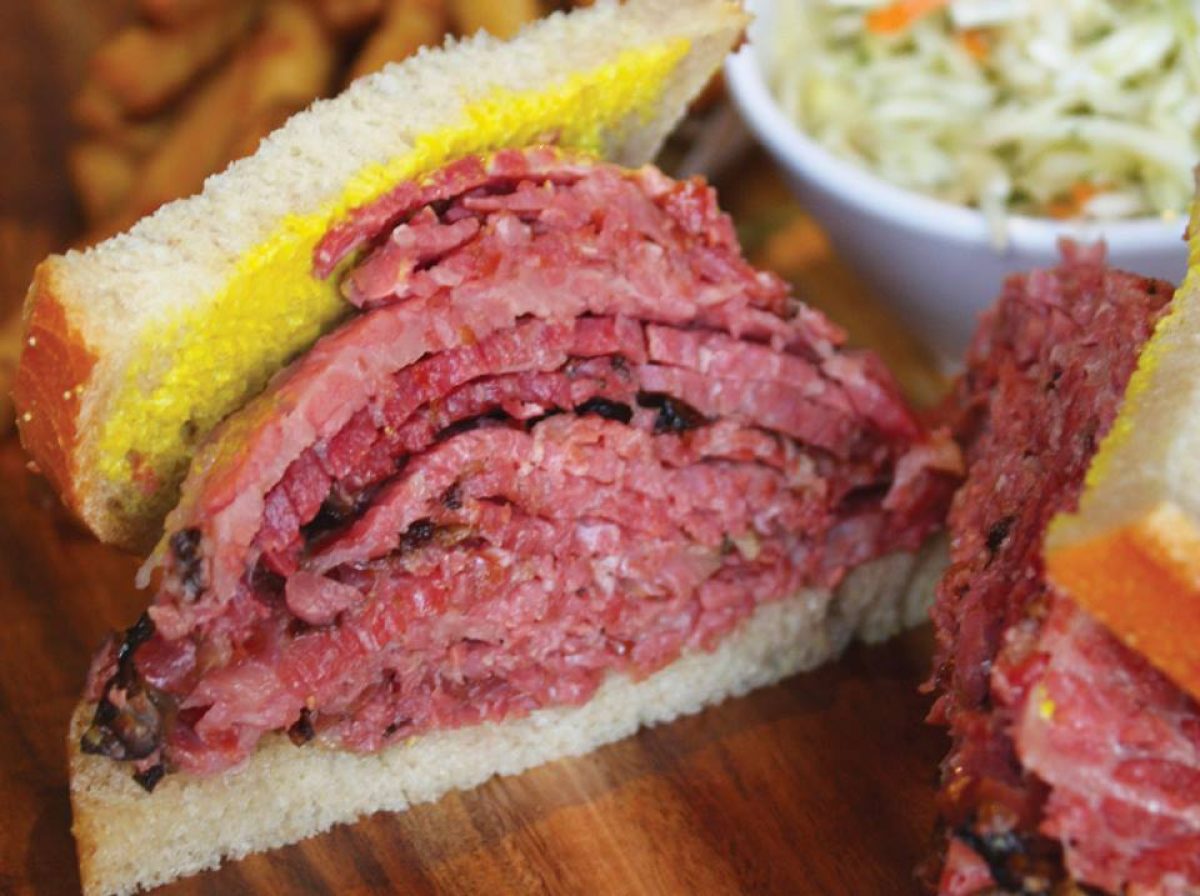
SMOKED MEAT SANDWICH
The Montreal smoked meat sandwich is a beloved culinary icon, featuring brisket cured with a blend of spices, smoked, and then steamed to achieve a tender and flavorful texture. Typically served on rye bread with yellow mustard, this hearty sandwich is a staple of Montreal's Jewish culinary heritage. Schwartz's Deli, a legendary establishment since 1928, is renowned for its authentic smoked meat sandwiches, drawing long lines of locals and tourists alike. Other notable delis like The Main and Snowdon Deli also offer excellent versions, making the smoked meat sandwich a must-try when visiting Montreal.
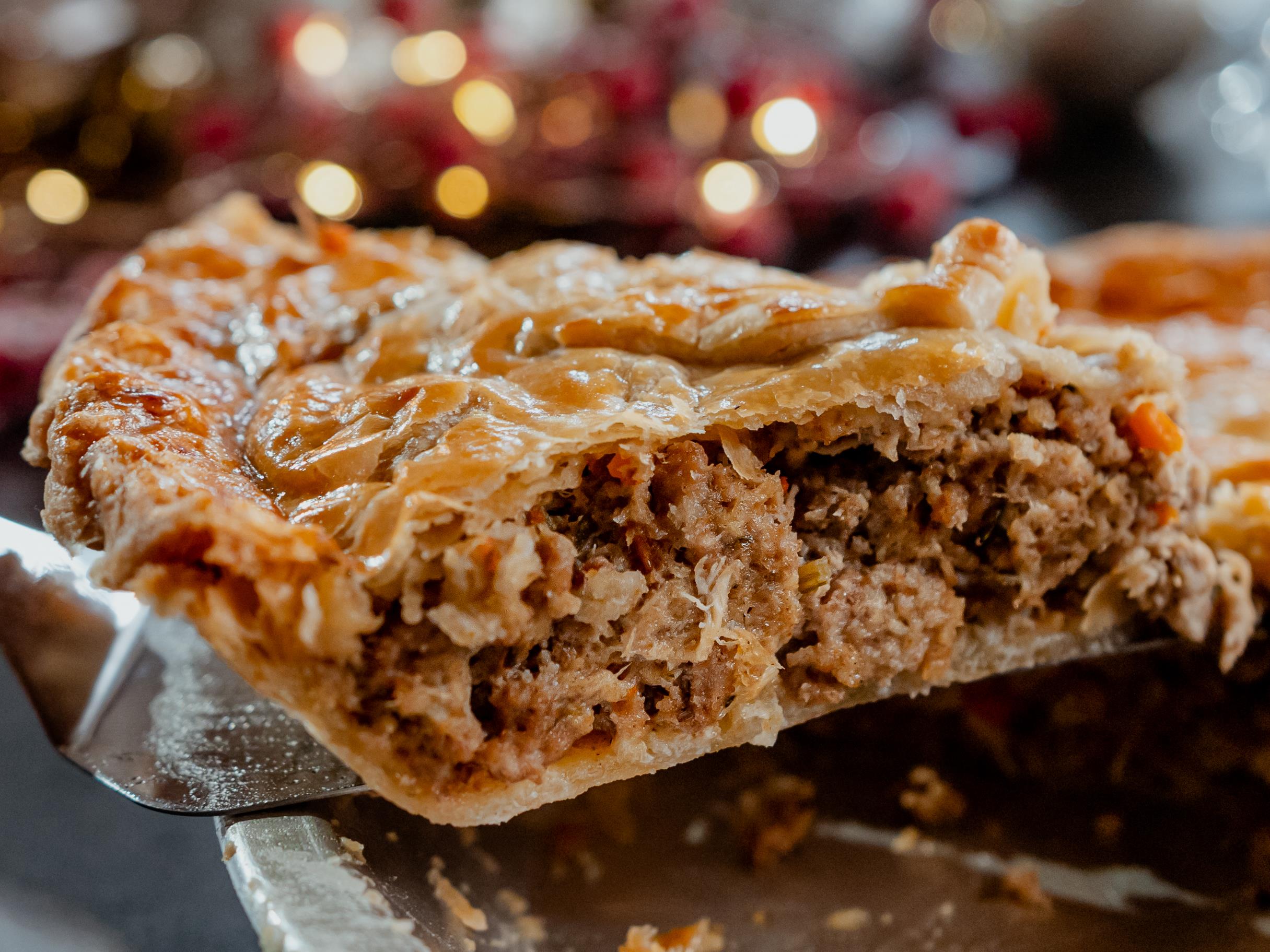
TOURTIÈRE
Tourtière is a traditional Quebecois meat pie that holds a special place in Montreal's culinary heritage. Typically enjoyed during the holiday season, especially at Christmas and New Year's, this savory pie is made with minced pork, veal, or beef, and sometimes a mix of all three. The meat is seasoned with a blend of spices such as cinnamon, cloves, and allspice, and mixed with onions and sometimes potatoes for added texture. Encased in a flaky, buttery pastry crust, tourtière is baked until golden brown and served warm. While it is a festive dish, many bakeries and restaurants in Montreal offer it year-round, allowing visitors to savor this comforting and flavorful pie anytime. Tourtière showcases the rich culinary traditions of Quebec and is a must-try for anyone exploring the region's cuisine.

MAPLE SYRUP DESSERTS
Montreal's maple syrup desserts offer a delicious journey into Quebecois culinary tradition, highlighting the region's rich natural resource. Maple taffy (tire d'érable) delights with its hot syrup poured onto snow, creating a chewy treat enjoyed especially in winter. Maple sugar pie (tarte au sucre) presents a creamy, caramelized filling baked in flaky pastry, while maple pudding chômeur offers a comforting blend of cake and syrup sauce. Maple butter (beurre d'érable) provides a spreadable delight perfect for toast or pancakes, showcasing the syrup's creamy texture and intense flavor. Finally, maple cotton candy spins a whimsical twist on classic sweets, using maple syrup to create a delicate and airy treat. These desserts not only satisfy sweet cravings but also celebrate Quebec's maple syrup heritage, offering a taste of tradition in every bite.
HOW MANY DAYS SHOULD YOU SPEND IN MONTREAL?
The ideal duration to spend in Montreal largely depends on personal interests and the pace of exploration. However, to fully appreciate the city's cultural richness and diverse attractions, a minimum of three to four days is recommended. This allows ample time to explore iconic landmarks such as Old Montreal with its cobblestone streets and historic architecture, visit renowned museums like the Montreal Museum of Fine Arts and the Pointe-à-Callière Archaeology Museum, and indulge in the city's vibrant culinary scene. Additionally, exploring neighborhoods like Plateau-Mont-Royal for its bohemian charm, visiting Mont Royal for panoramic views, and experiencing festivals or events depending on the season all contribute to a well-rounded Montreal experience. Whether enjoying the city's festivals, discovering its historical and cultural sites, or simply savoring its culinary delights, a few days in Montreal offer a comprehensive glimpse into its dynamic character and charm.
